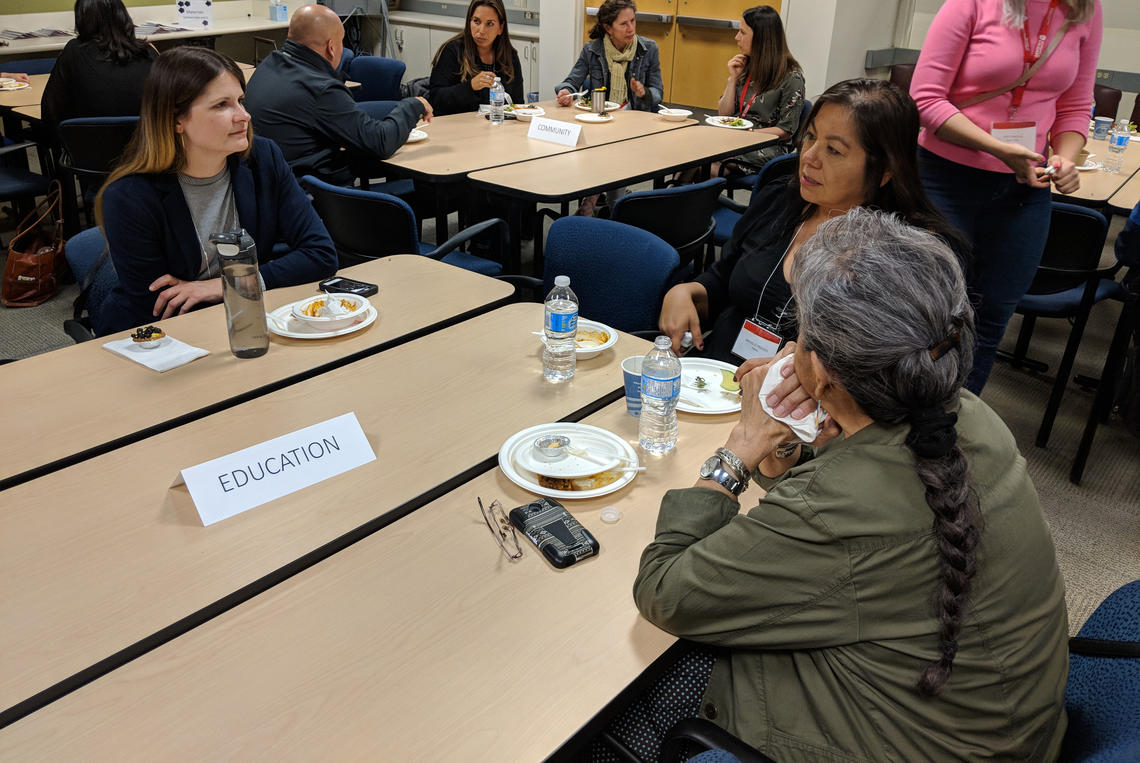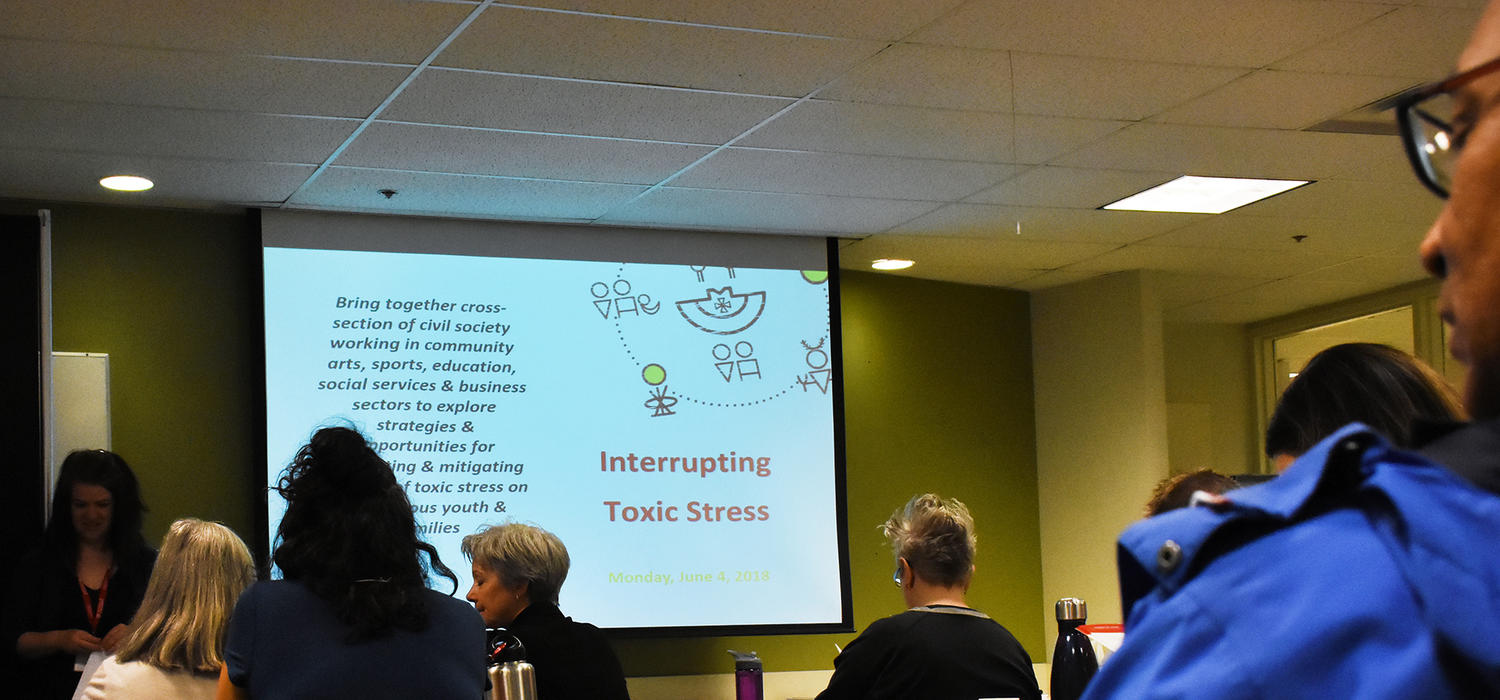
Indigenous elders guided attendees in imagining ways to reduce toxic stress Indigenous people face.
Aleem Bharwani
June 18, 2018

To understand the depth and pervasiveness of toxic stress shouldered by Indigenous communities, one only needs to consider history, says University of Lethbridge professor Leroy Little Bear.
First, waves of disease brought by the Spanish and then the British decimated Indigenous populations. Those not lost to illness would later endure the arrival of fur traders, Indian agents, missionaries and residential schools. It was a culturally cataclysmic series of events that reverberates today, says Little Bear, founder of both the Native American Studies Department at the University of Lethbridge and Harvard University’s Native American program. “This disturbance results in physical, mental and cultural stress, and this, in turn, results in social and physical vulnerability,” says Little Bear.
It’s that toxic stress — the kind of intense and prolonged activation of the body’s stress management system that adversely affects mental and physical health and is shown to cascade — which impacts future generations, who in turn pass it on their children, and on and on it goes.
Finding a way to break that chain reaction was the reason behind community partners, scholars, Indigenous elders and policy-makers gathering for Interrupting Toxic Stress, an event hosted by the Cumming School of Medicine (CSM), and supported by the O’Brien Institute for Public Health. The summit explored new ways to disrupt the cycle by building on the resilience and wisdom of Indigenous Peoples.
“This event represents our school’s explicit and humble foray into activating civil society,” says Dr. Aleem Bharwani, MD, lead for Public Policy for the O’Brien Institute and director of Public Policy and Strategic Partnerships at CSM.
"While scholars understand peer-reviewed knowledge of toxic stress, we craved community-held knowledge. What does toxic stress mean to Indigenous community members? What can we learn about their successes in interrupting toxic stress? What ideas can we generate to refine, spread and scale effective programs with and for Indigenous community members? We brought scholars and policy-makers from across Alberta to listen to music, theatre, sports, business, spiritual, and other Indigenous community groups from across rural and urban Alberta."
Little Bear provided one of two keynote addresses, along with Dr. Sheri Madigan, PhD, a member of the Owerko Centre at the Alberta Children’s Hospital Research Institute at the CSM and an assistant professor in the Department of Psychology at the Faculty of Arts. She holds a Canada Research Chair in Determinants of Child Development.

Indigenous elders guided attendees in imagining ways to reduce toxic stress Indigenous people face.
Aleem Bharwani
Madigan laid bare the research around adverse childhood experiences (ACEs) — factors that cross all population groups and can impact the health of generations to come, such as alcohol or drug misuse in the home, sexual and physical violence — which are shown to negatively impact the architecture of a developing brain.
Madigan and a team of researchers found women who suffer four or more ACEs before the age of 18 are more likely to face pregnancy and postpartum problems, and five times more likely to endure postnatal psychological problems, which then impacts their children in a “cascade of risk.”
At least one study has shown a significant association between residential school experiences and higher-than-average ACEs.
Madigan says toxic stress can be interrupted with compassion and reliable social supports. “Being compassionate is a critical ingredient for empowering another individual to show resilience in the face of adversity. Those with a high number of ACEs are buffered when supported in community — networks of friends and family. We can interrupt this cycle,” she says.
Under the guidance of Indigenous elders, attendees formed breakout sessions to imagine together new ways to alleviate toxic stress within their own fields. The next step, says Bharwani, is to develop and share those ideas and, down the road, measure their impact.
Lorelei Higgins, Indigenous relations strategist for The City of Calgary, says one of the things to emerge from her session was the need for greater collaboration in Indigenous programming in both sports and the arts. Given the number of business cards she saw changing hands, she’s hopeful that can happen.
“For me, the networking piece is huge,” Higgins says. “A lot of what we do in the City is we work in partnerships, to figure out how the City can enable the development and sustainment of those partnerships is an important aspect.”